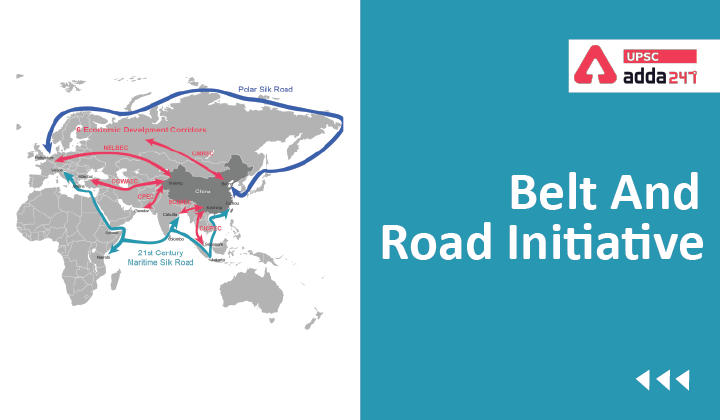Table of Contents
Belt and Road Initiative: Relevance
- GS 2: Effect of policies and politics of developed and developing countries on India’s interests, Indian diaspora.
Belt and Road Initiative: Context
- Investments in China’s Belt and Road Initiative (BRI) have fallen by 54 per cent since 2019 due to criticism over loan conditions and environmental concerns.
Belt and Road Initiative: Key points
- Belt and Road Investments last year were at their lowest since the programme was unveiled in 2013.
- Ruined deals, COVID-19 pandemic and a more cautious approach adopted by China has led to fall in investment.
- BRI is facing a wide range of issues ranging from strikes, public protests, corruption scandals, loan defaults, among other reasons.
What is BRI?
- China’s Belt and Road Initiative (BRI) development strategy aims to build connectivity and co-operation across six main economic corridors encompassing China and
- Mongolia and Russia;
- Eurasian countries;
- Central and West Asia;
- Pakistan;
- other countries of the Indian sub-continent; and Indochina.
- The Belt and Road Initiative formerly known as One Belt One Road or OBOR for short, is a global infrastructure development strategy adopted by the Chinese government in 2013 to invest in nearly 70 countries and international organizations.
- The Chinese President has originally announced the strategy as the “Silk Road Economic Belt” during an official visit to Kazakhstan in September 2013.
- “Belt” is short for the “Silk Road Economic Belt,” referring to the proposed overland routes for road and rail transportation through landlocked Central Asia along the famed historical trade routes of the Western Regions; whereas “road” is short for the “21st Century Maritime Silk Road“, referring to the Indo-Pacific Sea routes through Southeast Asia to South Asia, the Middle East and Africa.
- Examples of Belt and Road Initiative infrastructure investments include ports, skyscrapers, railroads, roads, airports, dams, coal-fired power stations, and railroad tunnels.
Belt and Road Initiative: Reasons for decrease in investment
- Environmental concerns: Chinese projects in Europe, particularly in Serbia coal mining is facing public flak as the project would pollute both land and water.
- In Ghana, the bauxite mine is located in key biodiversity areas and the project could pollute the source of clean drinking water.
- Dangerous working condition: In Georgia, local workers are complaining about low wages and dangerous working conditions in the railway project.
- Privatization: In Greece, people protested against privatization of ports and long working hours.
- Transparency: Transparency remains an issue for Chinese projects. For example, Belgrade metro system in Europe drew criticism from people as there was no public tender was placed.
- Major changes in public sentiment: Some low-and-middle income countries have to cancel BRI projects because of major change in public sentiment.
- Delay in project completion: The Tehran-Mashaad High-Speed Railway Electrification Upgrading project was expected to be completed within 48 months from the date of commencement (2016), however, till 2019, the project has completed only 3% of the project.
- Counter initiatives by the western countries: Initiatives like Build Back Better World (B3W), Global Gateway initiative by EU have also affected investments in BRI.
Also Read:





 TSPSC Group 1 Question Paper 2024, Downl...
TSPSC Group 1 Question Paper 2024, Downl...
 TSPSC Group 1 Answer key 2024 Out, Downl...
TSPSC Group 1 Answer key 2024 Out, Downl...
 UPSC Prelims 2024 Question Paper, Downlo...
UPSC Prelims 2024 Question Paper, Downlo...
